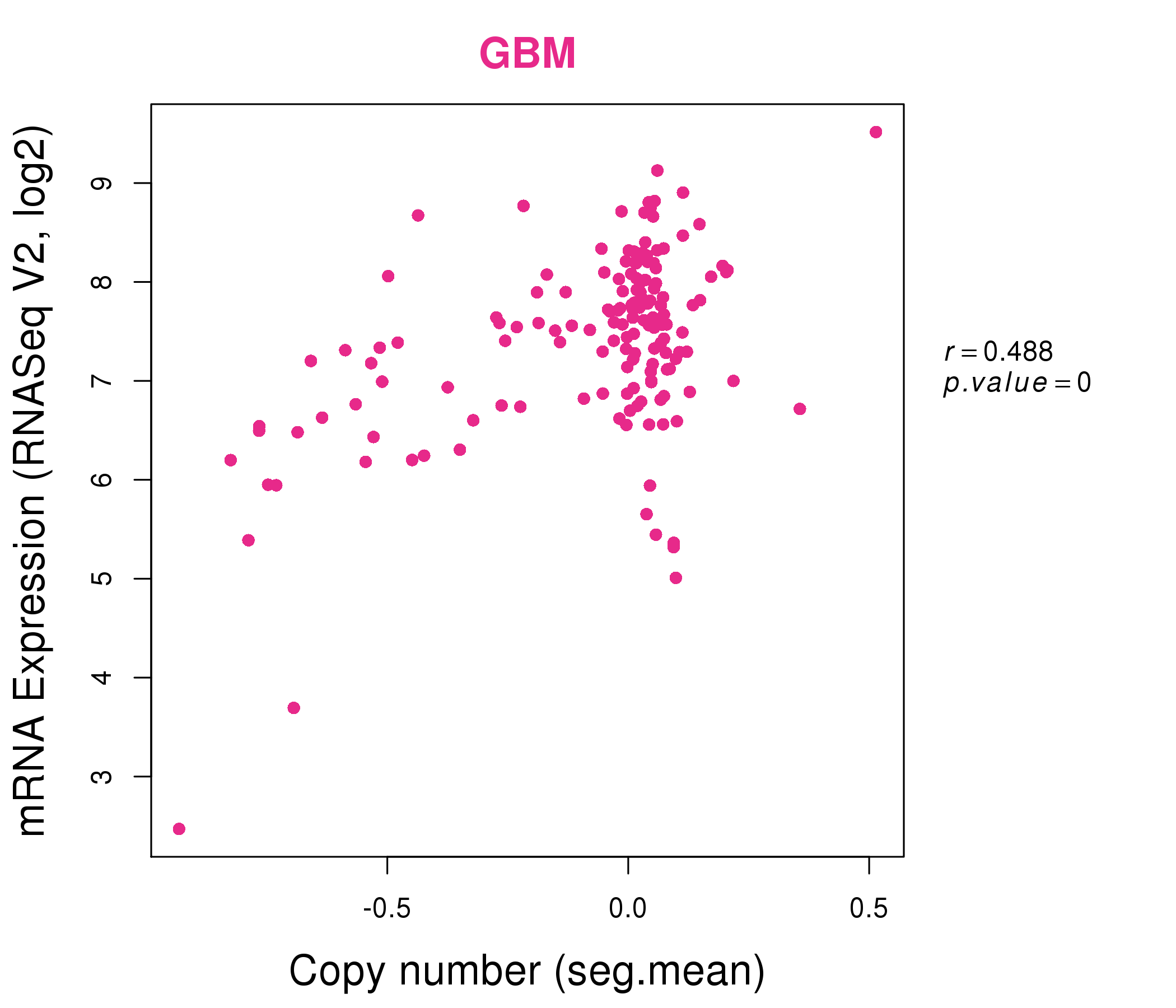|
|||||||||||||||||||||||||||||||||||||||||||||||||||||||||||||||||||||||||||||||||||||||||||||||||||||||||||||||||||||||||||||||||||||||||||||||||||||||||||||||||||||||||||||||||||||||||||||||||||||||||||||||||||||||||||||||||||||||||||||||||||||||||||||||||||||||||||||||||||||||||||||||||||||||||||||||||||||||||||||||||||||||||||||
| |
| Phenotypic Information (metabolism pathway, cancer, disease, phenome) |
| |
| |
| Gene-Gene Network Information: Co-Expression Network, Interacting Genes & KEGG |
| |
|
| Gene Summary for ELOVL4 |
| Basic gene info. | Gene symbol | ELOVL4 |
| Gene name | ELOVL fatty acid elongase 4 | |
| Synonyms | ADMD|CT118|ISQMR|SCA34|STGD2|STGD3 | |
| Cytomap | UCSC genome browser: 6q14 | |
| Genomic location | chr6 :80624528-80657315 | |
| Type of gene | protein-coding | |
| RefGenes | NM_022726.3, | |
| Ensembl id | ENSG00000118402 | |
| Description | 3-keto acyl-CoA synthase ELOVL4ELOVL FA elongase 4cancer/testis antigen 118elongation of very long chain fatty acids (FEN1/Elo2, SUR4/Elo3, yeast)-like 4elongation of very long chain fatty acids protein 4very-long-chain 3-oxoacyl-CoA synthase 4 | |
| Modification date | 20141207 | |
| dbXrefs | MIM : 605512 | |
| HGNC : HGNC | ||
| Ensembl : ENSG00000118402 | ||
| HPRD : 05697 | ||
| Vega : OTTHUMG00000015087 | ||
| Protein | UniProt: go to UniProt's Cross Reference DB Table | |
| Expression | CleanEX: HS_ELOVL4 | |
| BioGPS: 6785 | ||
| Gene Expression Atlas: ENSG00000118402 | ||
| The Human Protein Atlas: ENSG00000118402 | ||
| Pathway | NCI Pathway Interaction Database: ELOVL4 | |
| KEGG: ELOVL4 | ||
| REACTOME: ELOVL4 | ||
| ConsensusPathDB | ||
| Pathway Commons: ELOVL4 | ||
| Metabolism | MetaCyc: ELOVL4 | |
| HUMANCyc: ELOVL4 | ||
| Regulation | Ensembl's Regulation: ENSG00000118402 | |
| miRBase: chr6 :80,624,528-80,657,315 | ||
| TargetScan: NM_022726 | ||
| cisRED: ENSG00000118402 | ||
| Context | iHOP: ELOVL4 | |
| cancer metabolism search in PubMed: ELOVL4 | ||
| UCL Cancer Institute: ELOVL4 | ||
| Assigned class in ccmGDB | C | |
| Top |
| Phenotypic Information for ELOVL4(metabolism pathway, cancer, disease, phenome) |
| Cancer | CGAP: ELOVL4 |
| Familial Cancer Database: ELOVL4 | |
| * This gene is included in those cancer gene databases. |
|
|
|
|
|
| . | |||||||||||||||||||||||||||||||||||||||||||||||||||||||||||||||||||||||||||||||||||||||||||||||||||||||||||||||||||||||||||||||||||||||||||||||||||||||||||||||||||||||||||||||||||||||||||||||||||||||||||||||||||||||||||||||||||||||||||||||||||||||||||||||||||||||||||||||||||||||||||||||||||||||||||||||||||||||||||||||||||||||
Oncogene 1 | Significant driver gene in | ||||||||||||||||||||||||||||||||||||||||||||||||||||||||||||||||||||||||||||||||||||||||||||||||||||||||||||||||||||||||||||||||||||||||||||||||||||||||||||||||||||||||||||||||||||||||||||||||||||||||||||||||||||||||||||||||||||||||||||||||||||||||||||||||||||||||||||||||||||||||||||||||||||||||||||||||||||||||||||||||||||||||||||
| cf) number; DB name 1 Oncogene; http://nar.oxfordjournals.org/content/35/suppl_1/D721.long, 2 Tumor Suppressor gene; https://bioinfo.uth.edu/TSGene/, 3 Cancer Gene Census; http://www.nature.com/nrc/journal/v4/n3/abs/nrc1299.html, 4 CancerGenes; http://nar.oxfordjournals.org/content/35/suppl_1/D721.long, 5 Network of Cancer Gene; http://ncg.kcl.ac.uk/index.php, 1Therapeutic Vulnerabilities in Cancer; http://cbio.mskcc.org/cancergenomics/statius/ |
| REACTOME_METABOLISM_OF_LIPIDS_AND_LIPOPROTEINS | |
| OMIM | |
| Orphanet | |
| Disease | KEGG Disease: ELOVL4 |
| MedGen: ELOVL4 (Human Medical Genetics with Condition) | |
| ClinVar: ELOVL4 | |
| Phenotype | MGI: ELOVL4 (International Mouse Phenotyping Consortium) |
| PhenomicDB: ELOVL4 | |
| Mutations for ELOVL4 |
| * Under tables are showing count per each tissue to give us broad intuition about tissue specific mutation patterns.You can go to the detailed page for each mutation database's web site. |
| - Statistics for Tissue and Mutation type | Top |
 |
| - For Inter-chromosomal Variations |
| There's no inter-chromosomal structural variation. |
| - For Intra-chromosomal Variations |
| * Intra-chromosomal variantions includes 'intrachromosomal amplicon to amplicon', 'intrachromosomal amplicon to non-amplified dna', 'intrachromosomal deletion', 'intrachromosomal fold-back inversion', 'intrachromosomal inversion', 'intrachromosomal tandem duplication', 'Intrachromosomal unknown type', 'intrachromosomal with inverted orientation', 'intrachromosomal with non-inverted orientation'. |
 |
| Sample | Symbol_a | Chr_a | Start_a | End_a | Symbol_b | Chr_b | Start_b | End_b |
| ovary | ELOVL4 | chr6 | 80644888 | 80644908 | ELOVL4 | chr6 | 80647114 | 80647134 |
| cf) Tissue number; Tissue name (1;Breast, 2;Central_nervous_system, 3;Haematopoietic_and_lymphoid_tissue, 4;Large_intestine, 5;Liver, 6;Lung, 7;Ovary, 8;Pancreas, 9;Prostate, 10;Skin, 11;Soft_tissue, 12;Upper_aerodigestive_tract) |
| * From mRNA Sanger sequences, Chitars2.0 arranged chimeric transcripts. This table shows ELOVL4 related fusion information. |
| ID | Head Gene | Tail Gene | Accession | Gene_a | qStart_a | qEnd_a | Chromosome_a | tStart_a | tEnd_a | Gene_a | qStart_a | qEnd_a | Chromosome_a | tStart_a | tEnd_a |
| Top |
| Mutation type/ Tissue ID | brca | cns | cerv | endome | haematopo | kidn | Lintest | liver | lung | ns | ovary | pancre | prost | skin | stoma | thyro | urina | |||
| Total # sample | 1 | |||||||||||||||||||
| GAIN (# sample) | ||||||||||||||||||||
| LOSS (# sample) | 1 |
| cf) Tissue ID; Tissue type (1; Breast, 2; Central_nervous_system, 3; Cervix, 4; Endometrium, 5; Haematopoietic_and_lymphoid_tissue, 6; Kidney, 7; Large_intestine, 8; Liver, 9; Lung, 10; NS, 11; Ovary, 12; Pancreas, 13; Prostate, 14; Skin, 15; Stomach, 16; Thyroid, 17; Urinary_tract) |
| Top |
|
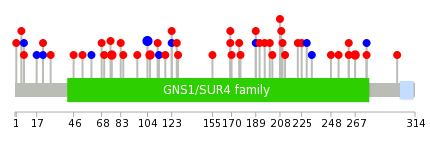 |
| Top |
| Stat. for Non-Synonymous SNVs (# total SNVs=35) | (# total SNVs=11) |
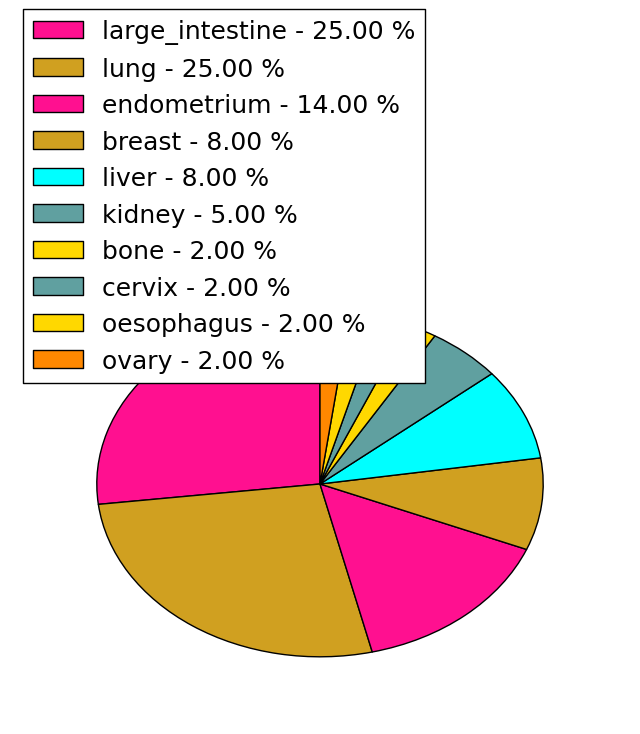 | 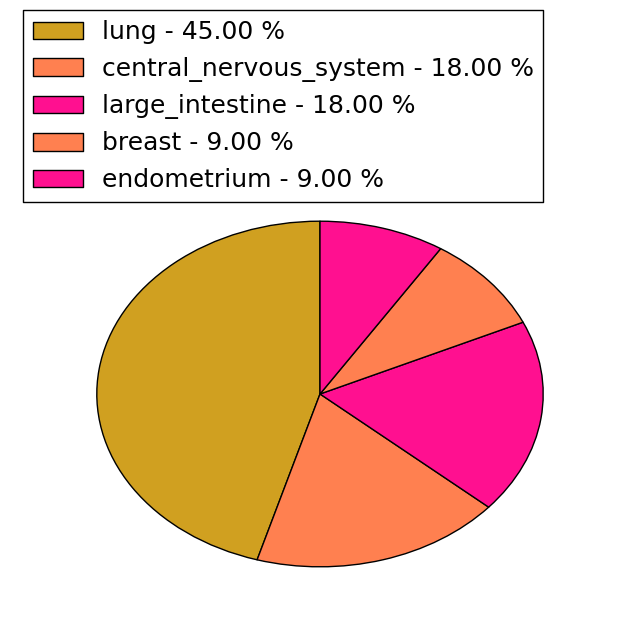 |
(# total SNVs=0) | (# total SNVs=0) |
| Top |
| * When you move the cursor on each content, you can see more deailed mutation information on the Tooltip. Those are primary_site,primary_histology,mutation(aa),pubmedID. |
| GRCh37 position | Mutation(aa) | Unique sampleID count |
| chr6:80634726-80634726 | p.A104A | 3 |
| chr6:80636002-80636002 | p.W66* | 2 |
| chr6:80634721-80634721 | p.Y106C | 2 |
| chr6:80635973-80635973 | p.R76C | 2 |
| chr6:80626471-80626471 | p.I267V | 2 |
| chr6:80634699-80634699 | p.V113V | 1 |
| chr6:80626485-80626485 | p.F262C | 1 |
| chr6:80635995-80635995 | p.K68N | 1 |
| chr6:80629178-80629178 | p.K210Q | 1 |
| chr6:80631373-80631373 | p.W170C | 1 |
| Top |
|
 |
| Point Mutation/ Tissue ID | 1 | 2 | 3 | 4 | 5 | 6 | 7 | 8 | 9 | 10 | 11 | 12 | 13 | 14 | 15 | 16 | 17 | 18 | 19 | 20 |
| # sample | 1 | 1 | 7 | 1 | 8 | 1 | 1 | 1 | 8 | 5 | 5 | |||||||||
| # mutation | 1 | 1 | 7 | 1 | 7 | 1 | 1 | 1 | 9 | 5 | 6 | |||||||||
| nonsynonymous SNV | 1 | 1 | 5 | 1 | 2 | 1 | 1 | 1 | 8 | 2 | 5 | |||||||||
| synonymous SNV | 2 | 5 | 1 | 3 | 1 |
| cf) Tissue ID; Tissue type (1; BLCA[Bladder Urothelial Carcinoma], 2; BRCA[Breast invasive carcinoma], 3; CESC[Cervical squamous cell carcinoma and endocervical adenocarcinoma], 4; COAD[Colon adenocarcinoma], 5; GBM[Glioblastoma multiforme], 6; Glioma Low Grade, 7; HNSC[Head and Neck squamous cell carcinoma], 8; KICH[Kidney Chromophobe], 9; KIRC[Kidney renal clear cell carcinoma], 10; KIRP[Kidney renal papillary cell carcinoma], 11; LAML[Acute Myeloid Leukemia], 12; LUAD[Lung adenocarcinoma], 13; LUSC[Lung squamous cell carcinoma], 14; OV[Ovarian serous cystadenocarcinoma ], 15; PAAD[Pancreatic adenocarcinoma], 16; PRAD[Prostate adenocarcinoma], 17; SKCM[Skin Cutaneous Melanoma], 18:STAD[Stomach adenocarcinoma], 19:THCA[Thyroid carcinoma], 20:UCEC[Uterine Corpus Endometrial Carcinoma]) |
| Top |
| * We represented just top 10 SNVs. When you move the cursor on each content, you can see more deailed mutation information on the Tooltip. Those are primary_site, primary_histology, mutation(aa), pubmedID. |
| Genomic Position | Mutation(aa) | Unique sampleID count |
| chr6:80634726 | p.A104A | 2 |
| chr6:80635973 | p.R76C | 2 |
| chr6:80656996 | p.R123M | 1 |
| chr6:80626485 | p.T233T | 1 |
| chr6:80629239 | p.N118D | 1 |
| chr6:80634702 | p.T229T | 1 |
| chr6:80626510 | p.V113V | 1 |
| chr6:80631354 | p.Q225R | 1 |
| chr6:80626527 | p.S112R | 1 |
| chr6:80631373 | p.R216R | 1 |
| * Copy number data were extracted from TCGA using R package TCGA-Assembler. The URLs of all public data files on TCGA DCC data server were gathered on Jan-05-2015. Function ProcessCNAData in TCGA-Assembler package was used to obtain gene-level copy number value which is calculated as the average copy number of the genomic region of a gene. |
 |
| cf) Tissue ID[Tissue type]: BLCA[Bladder Urothelial Carcinoma], BRCA[Breast invasive carcinoma], CESC[Cervical squamous cell carcinoma and endocervical adenocarcinoma], COAD[Colon adenocarcinoma], GBM[Glioblastoma multiforme], Glioma Low Grade, HNSC[Head and Neck squamous cell carcinoma], KICH[Kidney Chromophobe], KIRC[Kidney renal clear cell carcinoma], KIRP[Kidney renal papillary cell carcinoma], LAML[Acute Myeloid Leukemia], LUAD[Lung adenocarcinoma], LUSC[Lung squamous cell carcinoma], OV[Ovarian serous cystadenocarcinoma ], PAAD[Pancreatic adenocarcinoma], PRAD[Prostate adenocarcinoma], SKCM[Skin Cutaneous Melanoma], STAD[Stomach adenocarcinoma], THCA[Thyroid carcinoma], UCEC[Uterine Corpus Endometrial Carcinoma] |
| Top |
| Gene Expression for ELOVL4 |
| * CCLE gene expression data were extracted from CCLE_Expression_Entrez_2012-10-18.res: Gene-centric RMA-normalized mRNA expression data. |
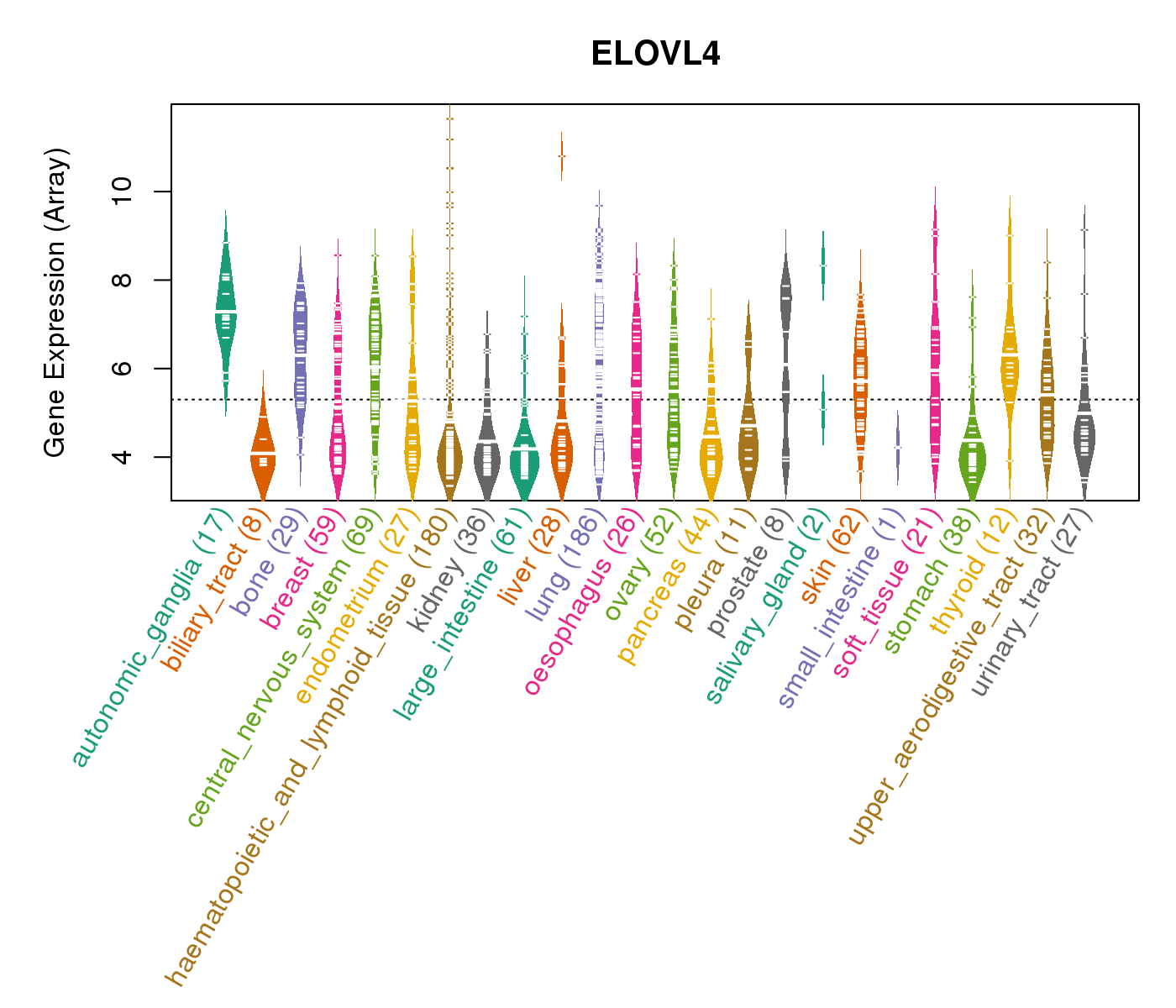 |
| * Normalized gene expression data of RNASeqV2 was extracted from TCGA using R package TCGA-Assembler. The URLs of all public data files on TCGA DCC data server were gathered at Jan-05-2015. Only eight cancer types have enough normal control samples for differential expression analysis. (t test, adjusted p<0.05 (using Benjamini-Hochberg FDR)) |
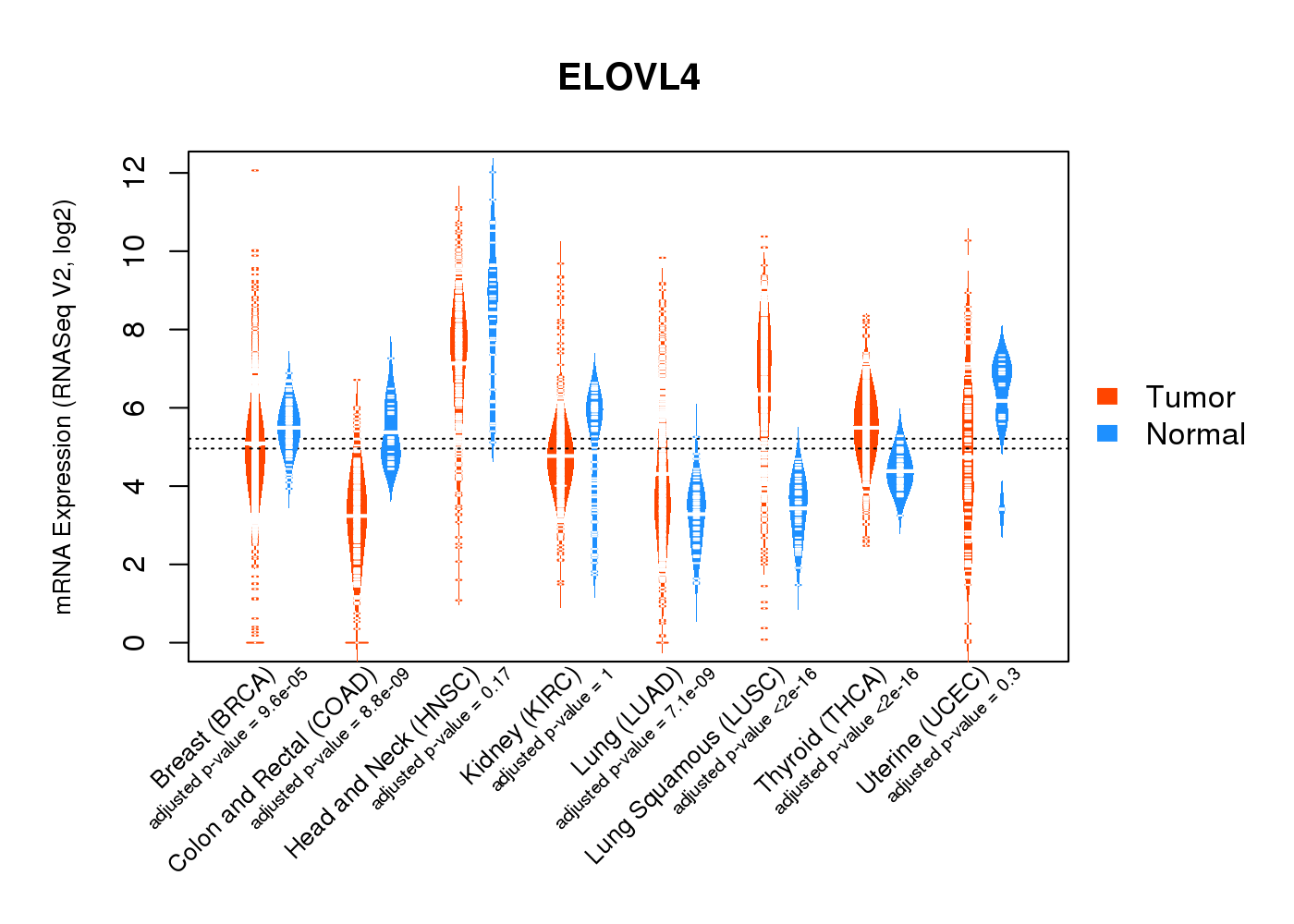 |
| Top |
| * This plots show the correlation between CNV and gene expression. |
: Open all plots for all cancer types
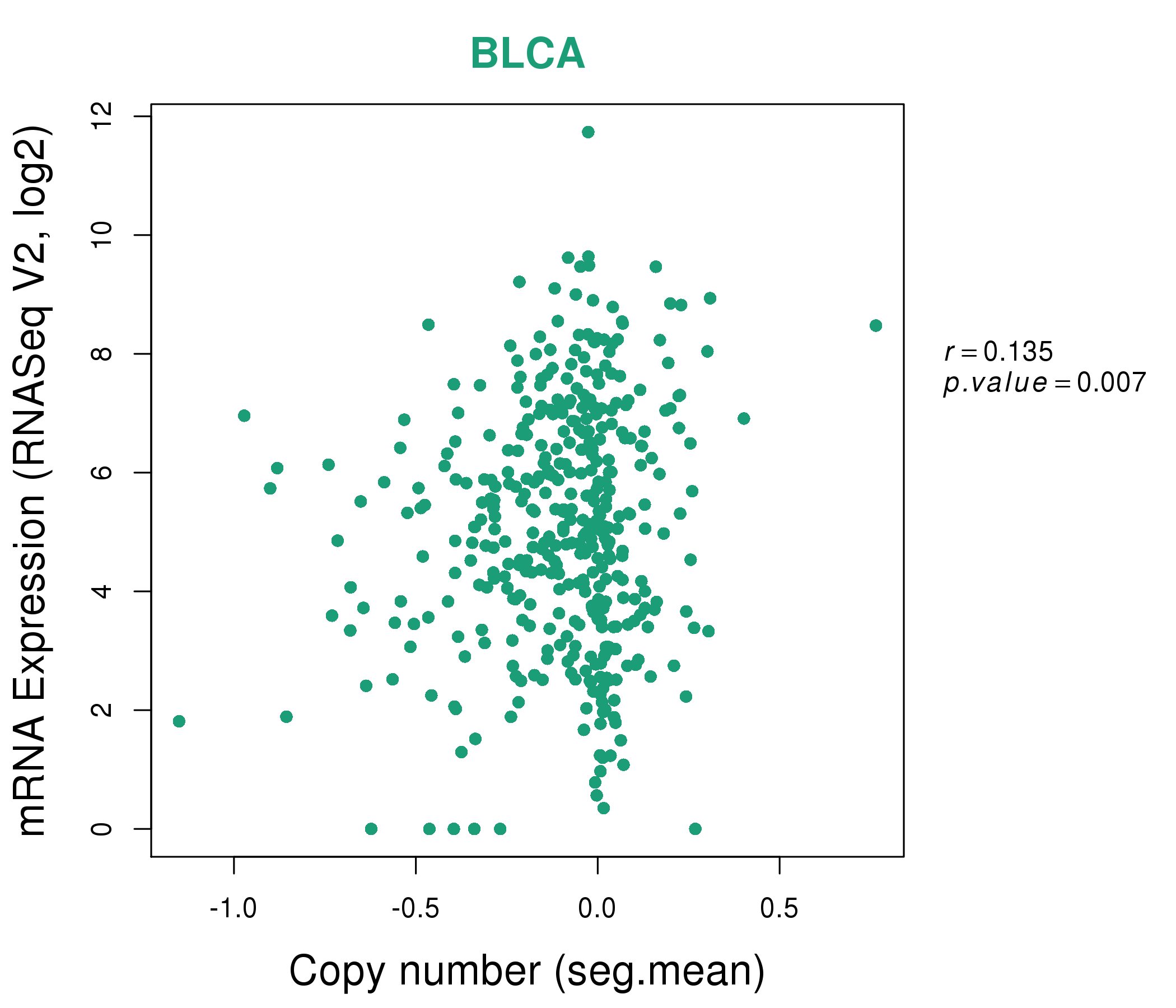 |
|
 |
|
| Top |
| Gene-Gene Network Information |
| * Co-Expression network figures were drawn using R package igraph. Only the top 20 genes with the highest correlations were shown. Red circle: input gene, orange circle: cell metabolism gene, sky circle: other gene |
: Open all plots for all cancer types
 |
| ||||
| ANKRD35,AWAT1,C1orf105,CARD18,CCL26,CYP2F1,CYP3A4, DGAT2,DGAT2L6,ECHDC1,ELOVL4,FADS6,IGF2,KRT79, MUC15,PLA2G2F,PNPLA1,PNPLA5,PSAPL1,RDH12,SOAT1 | ABHD13,BCL10,TMEM263,CTSO,DUSP11,ELOVL4,FAM3C, FKBP7,GLT8D2,HDGFRP3,LOC399959,MED21,NAP1L3,NFE2L2, NPTN,NUDT11,TCEAL7,TRPC1,TWSG1,UBTD2,ZCCHC10 | ||||
 |
| ||||
| BNC2,CALD1,CNRIP1,COPZ2,DSEL,DZIP1,EFS, ELOVL4,FBXL7,FERMT2,FEZ1,GLI3,GUCY1B3,LDB2, MPDZ,MSRB3,RAB34,SGCD,TSHZ3,TSPYL5,ZEB1 | ARMCX1,BNIP3,C16orf45,CADM4,CLIP4,EFEMP2,ELOVL4, FAM171B,FBXL2,FBXO17,FIBIN,LOC344595,LRCH2,NAP1L3, NECAB1,NUDT10,PRDM8,PTBP2,RNF180,SYNGR1,ZDHHC15 |
| * Co-Expression network figures were drawn using R package igraph. Only the top 20 genes with the highest correlations were shown. Red circle: input gene, orange circle: cell metabolism gene, sky circle: other gene |
: Open all plots for all cancer types
| Top |
: Open all interacting genes' information including KEGG pathway for all interacting genes from DAVID
| Top |
| Pharmacological Information for ELOVL4 |
| DB Category | DB Name | DB's ID and Url link |
| * Gene Centered Interaction Network. |
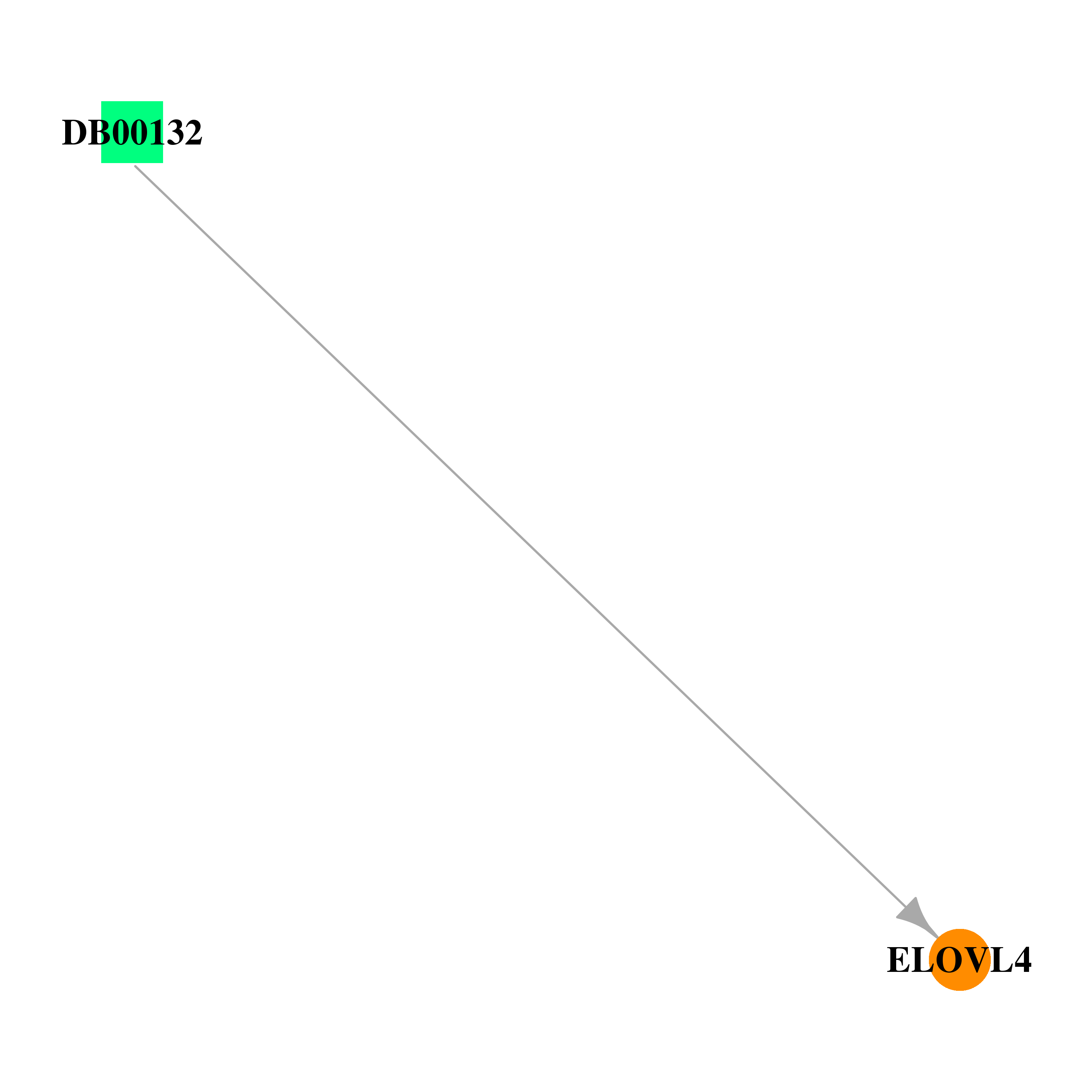 |
| * Drug Centered Interaction Network. |
| DrugBank ID | Target Name | Drug Groups | Generic Name | Drug Centered Network | Drug Structure |
| DB00132 | ELOVL fatty acid elongase 4 | approved; nutraceutical | Alpha-Linolenic Acid |  |  |
| Top |
| Cross referenced IDs for ELOVL4 |
| * We obtained these cross-references from Uniprot database. It covers 150 different DBs, 18 categories. http://www.uniprot.org/help/cross_references_section |
: Open all cross reference information
|
Copyright © 2016-Present - The Univsersity of Texas Health Science Center at Houston @ |







